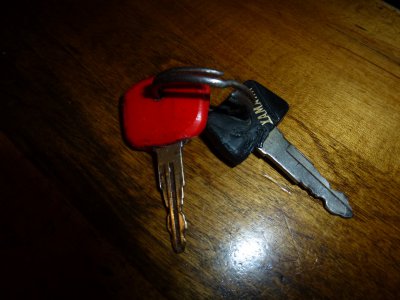- Joined
- Apr 23, 2018
- Messages
- 6,617
Mixture control valve. You want that! It's in the intake cover or dummy cover because it needs the intake air temperature to modulate vacuum.
Mixture control valve. You want that! It's in the intake cover or dummy cover because it needs the intake air temperature to modulate vacuum.
VALVE, MIXTURE CONTROL
product number: 4X71354100
 It looks to me like it hooks on to the
It looks to me like it hooks on to theHaynes manuals are very basic and omit details applicable to a specific model. I learned this the hard way; get a specific factory manual. They are available on line.Thanks John! Knowing that is a big help in getting this back together correctly.It looks to me like it hooks on to the
intake block on the rear cylinder. The Haynes manual covers too many models with not enough detail on the 700, still handy though.

Thank you. It has resistor plugs too so will have to look and see if it has the right plugs. I think it has BPR7ES plugs if i remember correctly.I’d be careful removing resistors from the HT leads without figuring out what they’re actually for. I’ve seen guys burn up their ignitor boxes that way before….
The thing is; if the ignitor box is expecting to see the combined resistance of the plug and the resistor “pill” and you’ve removed one of them, it will put out too much voltage and burn itself out.Thank you. It has resistor plugs too so will have to look and see if it has the right plugs. I think it has BPR7ES plugs if i remember correctly.
The manual I looked at indicated the plug to be a BP7ES. I put the resistors back in and will buy the right plugs when I go to town.The thing is; if the ignitor box is expecting to see the combined resistance of the plug and the resistor “pill” and you’ve removed one of them, it will put out too much voltage and burn itself out.
Personally, I’d just leave the ht leads alone. Eveything runs a resistor plug these days, so it was probably designed the way it is for a reason….
This morning I did a little reading on spark plugs and resistors. The purpose of the resistor is to reduce radio interference.The manual I looked at indicated the plug to be a BP7ES. I put the resistors back in and will buy the right plugs when I go to town.
